Heel Pain, Uveitis, TB, Vitamin D, Hidradenitis: July 2015 top social media news Save

In July 2015, RheumNow published 73 tweets about impactful news, research and teaching points that I feel will have an impact on the rheumatology community. We had a reach (impressions) of 49,900, 63 mentions, and 1277 visits to RheumNow.com to check out what we publish. The following list includes our top tweets from the month of July as defined by the number of clicks, retweets and likes. Don’t worry if these terms seem foreign or idiotic...so were selfie, dude and high impact when they were introduced into common vernacular.
1. Algorithmic approach to the diagnosis of Heel Pain based on pain location and quality from AFP journal. (Citation source: http://buff.ly/1LZbRI4) Published on 7/10, it was highly popular because of: a) the common topic of heel pain; b) an explained and expanded differential of heel pain beyond B27-related spondyloarthritis; and c) a superb figure showing an algorithmic approach to heel pain (see below) This tweet had an estimated reach 17,500.
2. Comparative biologic risk of TB among 75000 patients: 31 cases of mTB due to TNF inhibitors, yet only 1 case from abatacept and none reported with rituximab, tocilizumab, tofacitinib or ustekinumab. (Citation source http://buff.ly/1SBuhh0) RN published this on 7/22 as it speaks to the relative risk of TB with different biologics. Often the question arises about what biologic should I use when I have to avoid TNF inhibitors. My easy, evidence-based answer to this is almost any other biologic is a lot safer as the risk relates to the pivotal and unrivaled importance of TNF in establishing and maintaining granulomas. T cells, B cells, IL-6, JAK, IL-1, and IL-12/23 play almost no role in granuloma formation and stability. Warnings from the PI merely reflect the way the trials were done and where they were done (often high-risk countries). This report utilized data from clinical trials and included 11130 articles, 100 RCTs (75 000 patients) and 63 LTE studies with a total of 80774 patient-years. Nearly all the TB reports came from TNF inhibitor use. This tweet had an estimated reach of 11,500.
3. Vitamin D (4000 IU/day) fails to decrease the alpha-IFN signature in vitamin D deficient dsDNA+ SLE patients. (Citation source http://buff.ly/1LYWJau) RN published this on 7/3 because of the presumed but often unproven benefits of Vitamin D supplementation. Aside from its calcium absorption and bone effects, vitamin D has important regulatory immune functions and has been shown to block induction of an interferon signature by lupus sera. Vitamin D levels have been reported to be low in active SLE patients, but these findings have been refuted. This study, done by NIH-sponsored research from Aranow and coworkers, failed to demonstrate a beneficial effect of vitamin D supplementation in lupus. This tweet had and estimated reach of 10,200.
4. The European regulatory agency EMA recommends Humira (adalimumab - ADA) for the treatment of hidradenitis suppurativa (HS) based on experience in over 6000 patients. In a parallel report the FDA has granted orphan status to ADA for HS in May 2015. (Citation source http://buff.ly/1Hw1oTq) This news release, tweeted on 7/1, caught the attention of many as there is no known or approved treatment for patients with HS, or the SAPHO syndrome or CRMO – all osteitis syndromes associated with pustular skin disease. Heretofore, your limited options included NSAIDs, steroids or antibiotics. This tweet had an estimated reach of 5,100.
5. Across the Table: Cush & Schwartzman Discuss Management of Uveitis. (Citation source http://buff.ly/1JEL7vS) RN published this conversation with an expert on 7/4. I asked my good friend, and true expert in inflammatory eye disease, Dr. Sergio Schwartzman to write some insights on uveitis management. We did this is a unique, interactive way we called “Across the Table”. In this article, Dr. Schwartzman reviews the importance of excluding infection or lymphoma as the cause for uveitis, when to transition from steroid eye drops to biologics and what drugs are approved or have orphan drug status for uveitis. This tweet had an estimated reach of 4,600.
6. Review of Diseases Associated with Hidradenitis Suppurativa: Including acne, Spondyloarthritis, Crohns, Ulcerative colitis, SAPHO, Dowling-Degos & Fox-Fordyce disease. (Citation source http://buff.ly/1Ic317x) RN published this on 7/19 as this was one of a 2 part series on Hidradenitis (the other reviewing drugs used to treat Hydradenitis). This tweet had an estimated reach of 3,600.
7. Metanalysis of 40 randomized clinical trials involving more than 10,000 patients treated with TNF inhibitors show the TB risk is 0.26% (OR=25); but even if taking the combination of TNFi+MTX (OR = 58) comparted with TNFi monotherapy (OR=4). (Citation source http://buff.ly/1fu0wCf) This data was a surprised to many by showing a higher risk of mTB when a TNF inhibitor was combined with methotrexate (or azathioprine). Reasons for this higher rate are unclear but may represent a selection bias (more aggressive patients on more aggressive therapy) or the multinational origin of patients selected. The data suggests and additive risk of mTB if a TNF inhibitor is used in combination with a DMARD. This tweet had an estimated reach of 3,300.
8. Apremilast useful in lupus? An 8 patient, open label trial in discoid LE showed significant skin improvement (as measured by CLASI) after 85 days of therapy. Citation source http://buff.ly/1gQ3fqr. This is a report from 2012. Novel in that apremilast is a PDE4 enzyme inhibitor capable of blocking leukocyte production of IL-12, IL-23, TNF, alpha interferon with potential suppression of chemokines, neutrophil activity, Th1 and Th17-mediated immune responses. It was tweeted on 7/23 to an estimated audience of 2,300.


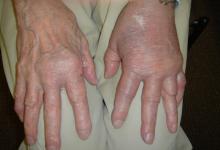
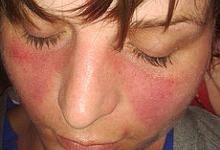
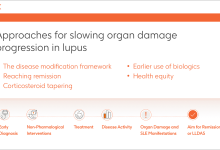
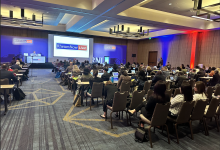
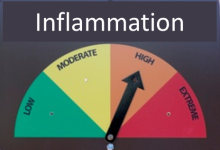
If you are a health practitioner, you may Login/Register to comment.
Due to the nature of these comment forums, only health practitioners are allowed to comment at this time.